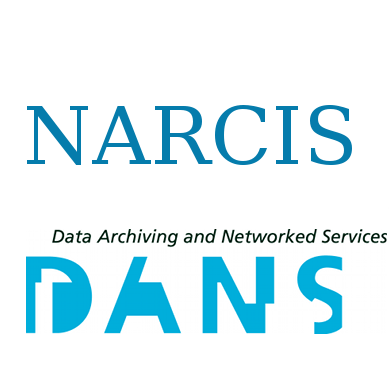Focal point
Location
National Academic Research and Collaborations Information System (NARCIS) is the main Dutch national portal for those looking for information about researchers and their work. NARCIS aggregates data from around 30 institutional repositories. Besides researchers, NARCIS is also used by students, journalists and people working in educational and government institutions as well as the business sector.
NARCIS provides access to scientific information, including (open access) publications from the repositories of all the Dutch universities, KNAW, NWO and a number of research institutes, datasets from some data archives as well as descriptions of research projects, researchers and research institutes.
This means that NARCIS cannot be used as an entry point to access complete overviews of publications of researchers (yet). However, there are more institutions that make all their scientific publications accessible via NARCIS. By doing so, it will become possible to create much more complete publication lists of researchers.
In 2004, the development of NARCIS started as a cooperation project of KNAW Research Information, NWO, VSNU and METIS, as part of the development of services within the DARE programme of SURFfoundation. This project resulted in the NARCIS portal, in which the DAREnet service was incorporated in January 2007. NARCIS has been part of DANS since 2011.
DANS - Data Archiving and Networked Services - is the Netherlands Institute for permanent access to digital research resources. DANS encourages researchers to make their digital research data and related outputs Findable, Accessible, Interoperable and Reusable.
Members:
Resources
Displaying 476 - 480 of 1863Grond voor schaalvergroting; Achtergronddocument
Het beleid van de agrarische sector is gericht op het versterken van de marktpositie, concurrentiekracht, innovatievermogen en duurzaamheid. De vraag is in welke mate de realisatie van beleidsdoelen afhankelijk is van het tempo van schaalvergroting in de grondgeboden agrarische sectoren
Effect of vegetation cover and transitions on regional wind erosion in drylands
Wind erosion is a critical environmental problem that threatens mainly the arid and semi-arid regions of our planet. Usually this problem is associated with desertification, poverty and other environmental and socioeconomic problems. Wind erosion causes the loss of fertile topsoil, and has a negative effect on agricultural production and on human health. When conditions favorable for wind erosion are present, the process can cause large scale environmental disasters like the Dust Bowl in the USA in the 1930s.
Myths in Land Degeradation and Development
Water erosion is the most important degradation process of the 10 degradation processes distinguished by the European Union. The impact of rain drops on the soil surface causes splash of soil particles
Multifunctionele Platforms op Zee, het concept, de wet en regelgeving en de lessen voor de toekomst
De mariene systemen en de kustzones worden steeds intensiever gebruikt voor verschillende functies. Hierdoor ontstaan nieuwe 'competing claims' op deze ruimte. Deze variëren van claims van natuur en biodiversiteit (zee-reservaten), vanuit de economie (visreservaten voor de visserij) tot het ontwikkelen van zones voor windmolens, boorplatforms, zandwinning, scheepvaart etc. Dit rapport geeft een beschrijving van een relatief nieuw fenomeen dat in opkomst is: Multifunctionele Platforms op Zee waarop maritieme activiteiten met elkaar zijn geclusterd op zee.
Analysis of vegetation-activity trends in a global land degradation framework
Land degradation is a global issue on a par with climate change and loss of biodiversity, but its extent and severity are only roughly known and there is little detail on the immediate processes – let alone the drivers. Earth-observation methods enable monitoring of land resources in a consistent, physical way and on global scale by making use of vegetation activity and/or cover as proxies. A well-known spectral proxy is the normalized difference vegetation index (NDVI), which is available in high temporal resolution time series since the early 1980s.


